It is usually straightforward to differentiate animals from plants and vice-versa. However, many people get confused with Venus flytraps or any other carnivorous plants. People are typically puzzled over the fact that carnivorous plants catch their own prey and eat meat.
Venus flytraps are unique beings, they are carnivorous plants. But, regardless of their predatory nature, Venus flytraps belong to the plant kingdom. They produce their own food through photosynthesis, they grow continuously throughout their life, and they are anchored to the ground.
Now that you know that Venus flytraps are plants, we will describe the reasoning of this classification. Many factors contribute to this designation, such as:
- Feeding process
- Reproduction
- Movement
- Cellular structure
- Growth
- Response to stimuli
Feeding Process
Plants can generate their own food through the photosynthesis process. During this process, plants utilize sunlight to synthesize food from carbon and water. Animals, on the other hand, depend on plants for their nutrition. Some animals are herbivores and consume plants directly. Others consume other animals or beings that exist thanks to plants.
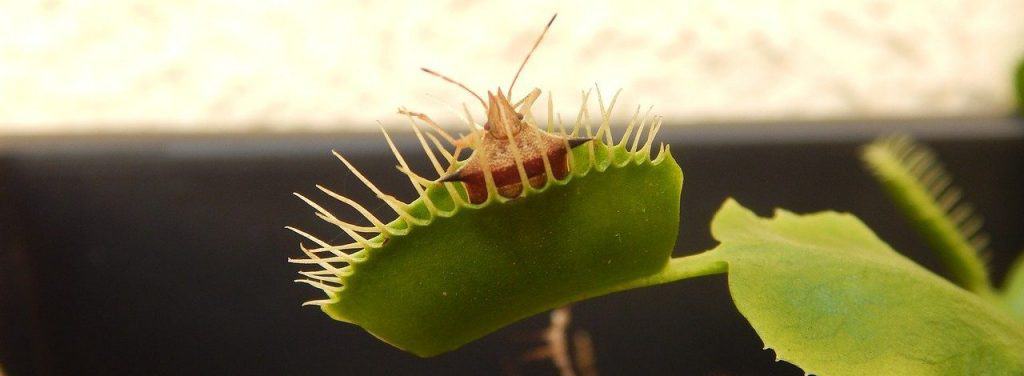
Venus flytraps catch bugs with their traps and digest them with enzymes, but they consume insects as a supplement to their diet. Generally, Venus flytraps grow using photosynthesis.
Venus flytraps produce their own food by taking energy from sunlight and nutrients from air and soil. Yet, Venus flytraps grow in inferior soil (lacks nutrients). Due to the lack of nutrients in the ground, these plants have evolved to be able to consume small prey and supplement their diet.
The Venus flytrap feeding process is fascinating from a scientific perspective. Also, if you grow Venus flytraps at home, you will definitely be curious and even enjoy feeding your plant!
Here is an article on the feeding process to get more details: How to Feed a Venus Flytrap?
Reproduction
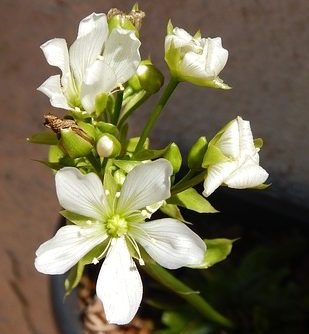
Plants can reproduce sexually or asexually, depending on the species.
Most animals reproduce sexually and give birth to their young ones. However, some animals like algae reproduce asexually.
Venus flytraps can reproduce sexually and asexually. Like many other plants, Venus flytraps produce flowers for sexual reproduction.
Once a pollinator has transferred pollen from the anther to the stigma, the fertilized flowers produce seeds. Once fertilized, flowers change dramatically. Their color changes; they dry up and die. Then, the seeds are left behind in the remains of the dead flower.
Venus flytraps can also reproduce asexually (only one parent). In this process, the roots of the Venus flytrap extend in the soil and create a bulb root. Then, a new Venus flytrap grows from that bulb. After, you can separate both bulbs and have two independent plants.
Movement
Most animals characterize with constant movement.
Since the day animals are born, animals are in continuous motion, catching prey, hiding from danger, or perhaps searching for suitable habitat.
Plants, on the other hand, stay in one single place. They are rotted to the ground. Then, what about Venus flytraps?
They are anchored to the ground, but they demonstrate swift movements with their traps.
Yes, Venus flytraps exhibit an impressive range of motion. Also, they are very fast in closing those traps. Venus flytraps can close their leaves in just one-tenth of a second.
Even though Venus flytraps have developed the ability to move and catch prey, they can not move from one place to another, like most animals (except sponges and corals) can.
Most plants are capable of movement. They sense light and try to direct themselves to get more sunlight. Other plants adhere to surfaces and slowly climb through walls. But, in the end, the vast majority of plants are not mobile (exceptions: Volvox and Chlamydomonas); they live in one set spot.
Venus flytraps are no different. Still, it is impressive how Venus flytraps have evolved to exhibit extremely fast reaction times that are still not fully understood by botanists.
Cellular Structure
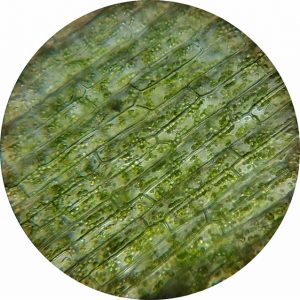 From a cellular perspective, plants and animals are also different. Animal and plant cells are both eukaryotic. However, organelles within the cell vary. For example, chloroplast, cell walls, and plastics are only found in plant cells.
From a cellular perspective, plants and animals are also different. Animal and plant cells are both eukaryotic. However, organelles within the cell vary. For example, chloroplast, cell walls, and plastics are only found in plant cells.
Venus flytraps are plants. Therefore their cellular structure contains all the plant-specific elements.
You might have noticed Venus flytraps exhibit a bring green color. The color is associated with the green color pigment of chlorophyll (vital for photosynthesis).
Growth
Plants grow continuously throughout their whole lifespan. Animals grow for a specified period. Then, their growth stops. Venus flytraps, like all other plants, continue to grow throughout their entire life.
Venus flytraps can live for many years, their lifespan is not defined perfectly, but they are expected to live up to 20 years.
During adulthood, they can reach a size of 5 inches (12.7 cm) in diameter, a foot vertically, and 1-inch long traps. But even then, Venus flytrap plants will shrink and grow through the seasons. Also, their leaves are under constant change. Some wither and new ones spur.
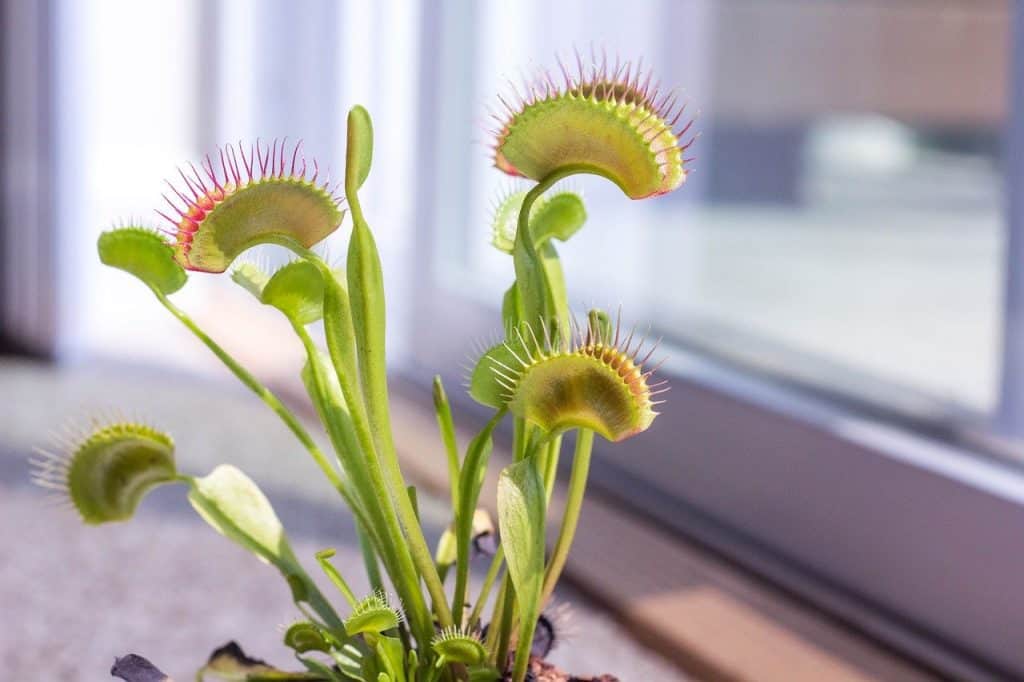
Response to Stimuli
Plants can respond to different stimuli; however, they are not as sensitive as animals. Animals have a full nervous system which is necessary to interact with the environment. Several organs in animals allow them to respond to stimuli rapidly.
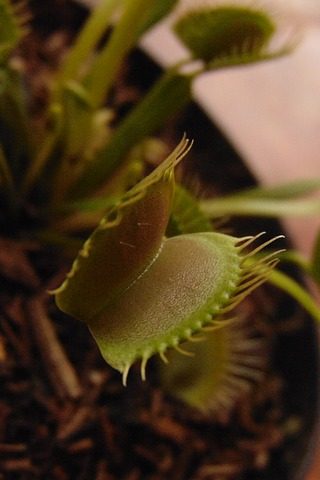 But, if plants are not as sensitive, how do Venus flytraps catch their prey so efficiently?
But, if plants are not as sensitive, how do Venus flytraps catch their prey so efficiently?
Well, let’s start from the beginning. The Venus flytrap leaves will only activate if they sense motion inside of them. Each trap is made up of two leaves, and each leaf has three hair cells arranged in a triangular pattern.
The trap will only close if something touches the hair cells inside the trap two consecutive times in a short period. Venus flytraps develop the double stimuli requirement to avoid closing due to rain, dirt, or any inanimate object touching the trap.
All in all, the whole plant has not developed a system to react with stimuli. Instead, the leaves in Venus flytrap have evolved into jaw-like structures with sensitive hair cells.
Conclusion
Venus flytraps are not animals; they are plants. Today we explored several factors such as reproduction, cellular structure, and response to stimuli that classify Venus flytraps as plants. However, there are many more characteristics associated with this scientific decision. For example, you could explore their food storage systems or genetics.
Related Questions
What is a Venus flytrap classified as?
Venus flytraps belong to the plant kingdom. They are part of the Droseraceae family, which is the family of carnivorous plants. And the scientific name of Venus flytraps is Dionaea muscipula
Why is a Venus flytrap not an animal?
Venus flytraps are carnivorous plants, they are not animals as they exhibit plant kingdom behaviors and characteristics. Venus flytraps synthesize their own food through photosynthesis.
Their tissue is made up of plant cells with chloroplast, cell walls, and plastics. Also, they grow continuously throughout their life. Venus flytraps do consume bugs, but they only extract key nutrients to supplement their diet.
Are Venus flytraps alive?
Venus flytraps are alive. They are carnivorous plants native to South Carolina and North Carolina in the United States. Currently, due to illegal poaching, the increase in farming and urbanization, and several other factors, Venus flytraps are endangered species.
Venus flytraps only grow naturally in the Carolinas in the United States. But, because of their unique and fascinating nature, people grow them all over the world by mimic their natural habitat. So, do not be surprised if you find a sale of live Venus flytraps anywhere out of the Carolinas.
